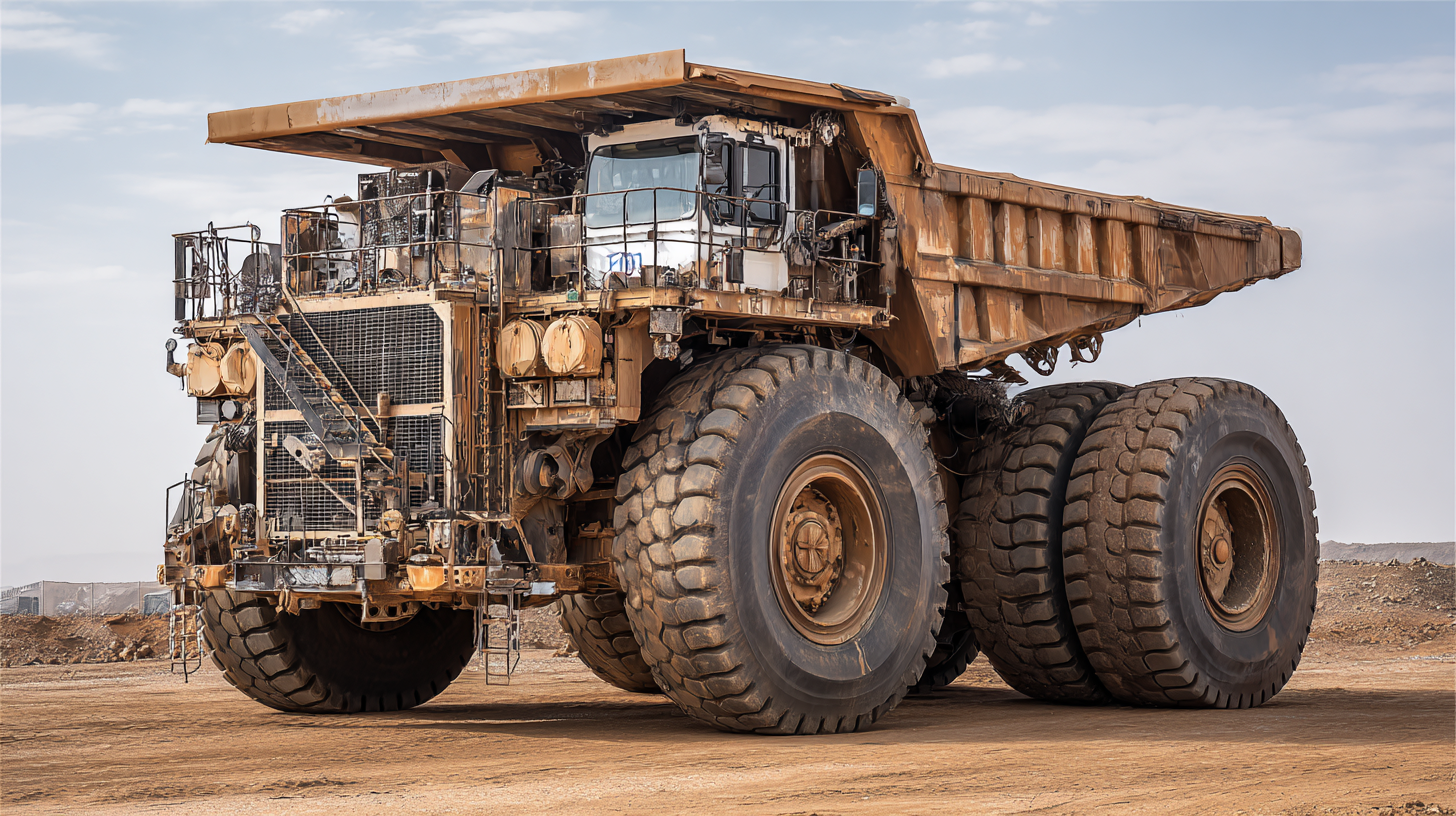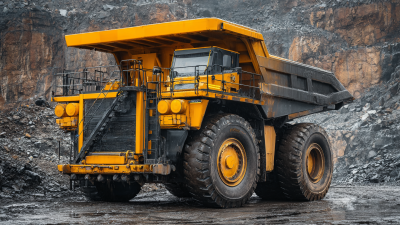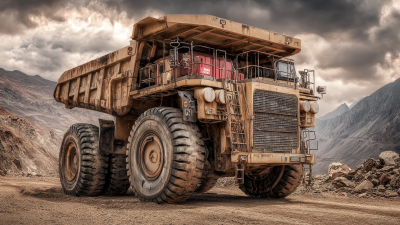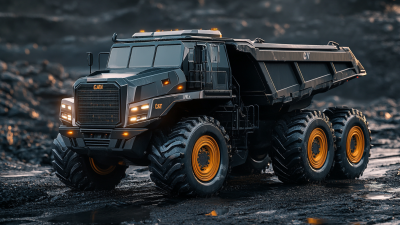In the realm of heavy machinery, few vehicles command attention quite like the Largest Mining Dump Truck in the world. This incredible engineering achievement represents the pinnacle of design and functionality, showcasing the relentless pursuit of efficiency and productivity in the mining industry. Measuring in at an astounding capacity, this colossal dump truck not only enhances the logistical capabilities of mining operations but also embodies the technological advancements that have taken place in recent years.
At over 450 tons, the Largest Mining Dump Truck challenges our perceptions of size and power. Its sheer scale and innovative features allow it to transport massive quantities of material in one trip, dramatically reducing the time and resources needed for mining operations. With advancements in automation and power management, this dump truck exemplifies how cutting-edge engineering can lead to increased safety and reduced environmental impact.
As we delve deeper into the engineering marvels of this gigantic machine, we will explore its construction, remarkable features, and the impact it has on the mining industry. From its powerful drivetrain to its impressive payload capacity, each aspect of the Largest Mining Dump Truck has been meticulously designed to meet the demands of modern mining while paving the way for future innovations in the field.

The evolution of mining dump trucks has been a fascinating journey marked by significant engineering innovations that have redefined the capabilities of the mining industry. In the early days, trucks like the McCormick 2-Wheel Drive, which emerged in the 1930s, had limited capacity and efficiency. However, as mining operations grew larger and more demanding, the need for more powerful vehicles became apparent. A pivotal moment in this evolution occurred in the 1990s when trucks like the Caterpillar 797B entered the market, boasting a payload capacity of 400 tons and remarkable advancements in safety and fuel efficiency—features that are now industry standards.
According to a report by Global Market Insights, the global haul truck market is expected to witness a significant growth rate, projected to exceed $10 billion by 2026. This demand is driven by increasing mining activities across countries like Australia and Canada, where vast mineral resources are complemented by technological advancements in truck design and functionality. The introduction of autonomous mining trucks, such as those developed by Komatsu and Caterpillar, represents the next leap in innovation, where technology and engineering converge to enhance productivity while minimizing human risk. These developments not only reflect a shift towards automation but also illustrate a commitment to reducing the environmental impact of mining operations.
This chart illustrates the evolution of mining dump trucks over the decades, highlighting key improvements in load capacity (measured in tons) and advancements in technology.
The world’s largest mining dump truck, the Belaz 75710, is a remarkable feat of engineering, designed to tackle the demanding challenges of modern mining operations. With an astonishing payload capacity of 450 metric tons, it is capable of transporting vast quantities of materials, making it a vital asset in large-scale mining projects. According to a report by MarketsandMarkets, the global mining truck market is expected to grow to USD 7.5 billion by 2025, fueled by increasing demand for raw materials and the need for efficient transportation solutions.
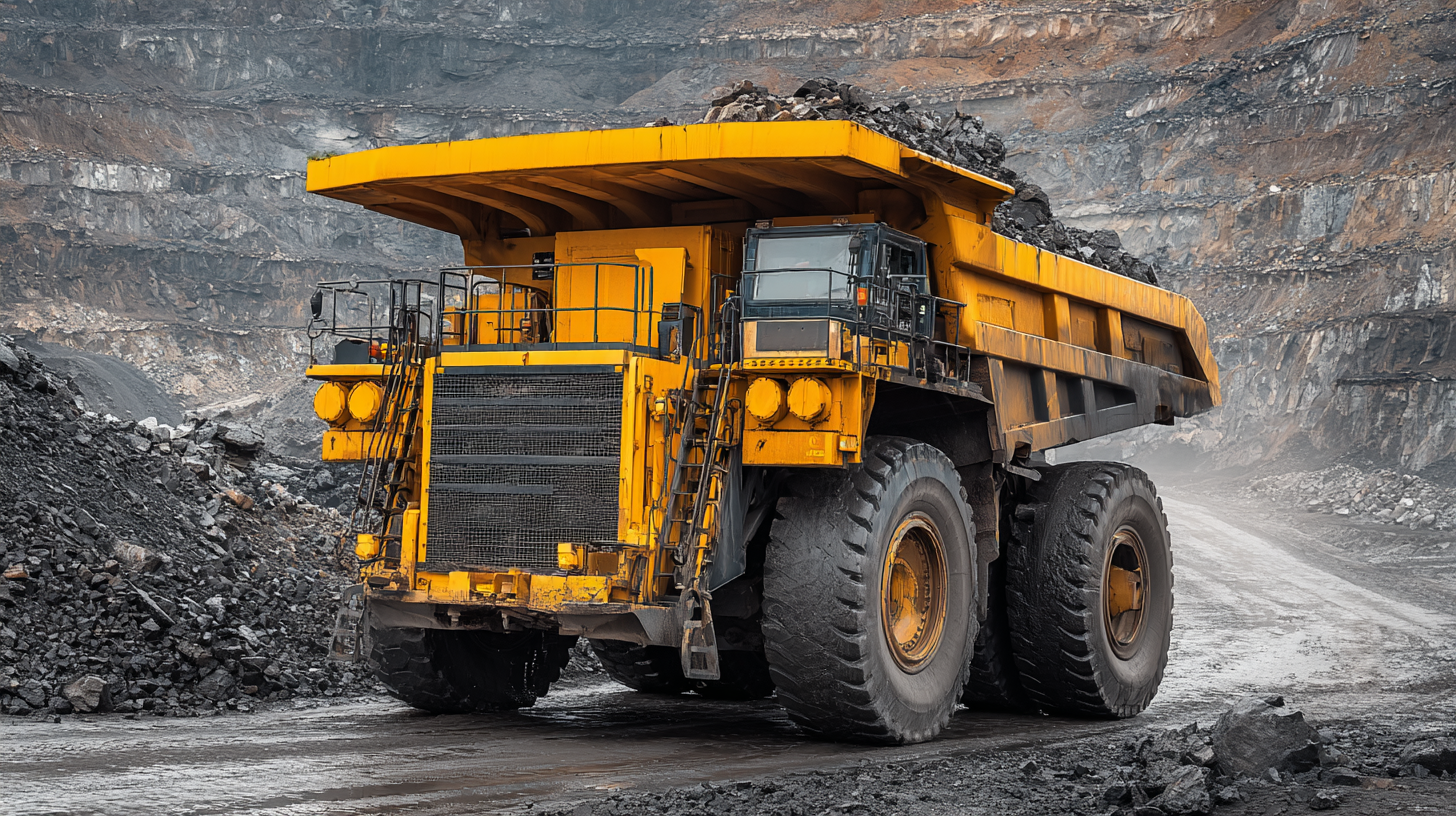
Key features of the Belaz 75710 include its dual tires, each measuring nearly 4 meters in diameter, which enhance its stability and performance on rugged terrains. The truck is powered by two 16-cylinder turbocharged diesel engines, collectively producing 4,600 horsepower, enabling it to navigate even the steepest gradients. Furthermore, its advanced hydraulic systems ensure optimal lifting and dumping capabilities, which significantly reduce cycle times and improve overall productivity. According to the International Journal of Mining Science and Technology, the implementation of such heavy-duty vehicles can increase operational efficiency by up to 30%. These specifications not only highlight the technical prowess involved but also underline the growing trend towards automation and innovation in the mining industry.
Mining dump trucks play a crucial role in modern mining operations, enhancing productivity and efficiency across the industry. According to a recent report from MarketsandMarkets, the mining truck industry is expected to grow significantly, with a compound annual growth rate (CAGR) of 7.1% from 2020 to 2025. This growth is driven by the increasing demand for minerals and metals, which necessitates advanced equipment capable of transporting large volumes of materials swiftly and safely.
The largest mining dump trucks, such as the BelAZ 75710, are engineered to handle up to 450 tons of payload, revolutionizing the efficiency of mining operations. These machines not only reduce the number of trips required to transport materials but also minimize fuel consumption per ton, thanks to their innovative design and high-capacity engines. A study by Allied Market Research highlights that the deployment of heavy-duty dump trucks can lead to a potential increase in operational efficiency by 25% compared to standard vehicles. This effectiveness is vital in meeting the escalating global demand for raw materials, as mining companies strive to maximize output while minimizing environmental impacts.
The largest mining dump trucks in the world represent a pinnacle of engineering excellence, specifically designed to tackle the immense demands of the mining industry. When assessing these colossal machines, one of the most critical aspects to consider is their fuel consumption. The latest models, equipped with state-of-the-art engines, prioritize efficiency without sacrificing power. For instance, advancements in fuel management systems and aerodynamics enable these trucks to reduce fuel burn while maximizing productivity, ultimately leading to lower operational costs for mining companies.
Another key feature of these mega trucks is their payload capacity, which can reach astonishing figures often exceeding 400 tons. This heavy lifting capability allows mines to transport larger quantities of material in fewer trips, significantly enhancing efficiency. The integration of robust materials and innovative design not only supports this hefty payload but also ensures durability on challenging terrains. The combination of high payload capacity and optimized fuel consumption illustrates a perfect harmony of engineering ingenuity, helping the mining sector meet both economic and environmental challenges head-on.
| Model | Payload Capacity (tons) | Fuel Consumption (liters/hour) | Engine Power (HP) | Length (m) | Width (m) | Height (m) |
|---|---|---|---|---|---|---|
| Model A | 400 | 70 | 2000 | 10.5 | 7.3 | 4.5 |
| Model B | 450 | 68 | 2200 | 11.0 | 7.5 | 4.8 |
| Model C | 500 | 75 | 2400 | 11.5 | 8.0 | 5.0 |
In the realm of heavy machinery, large dump trucks play a critical role in mining operations, transporting massive loads of materials efficiently. With the constant advancement in technology, manufacturers have placed a significant emphasis on enhancing the safety features of these behemoth vehicles. Innovative systems such as proximity detection sensors and automated braking mechanisms are now integral components designed to protect operators in hazardous environments. These technologies work together to minimize the risk of accidents, ensuring that operators can focus on their tasks without the looming threat of collision or mechanical failure.
Furthermore, advancements in ergonomic design and operator monitoring systems have significantly improved the working conditions within the cab of large dump trucks. Modern vehicles are now equipped with climate control systems, vibration-dampening seats, and advanced visibility features, all aimed at reducing operator fatigue. Safety is further bolstered by real-time communication systems that allow for quick reporting and response to any potential dangers on-site. As the mining industry continues to evolve, the focus on protecting workers through innovative engineering marvels will remain paramount.
